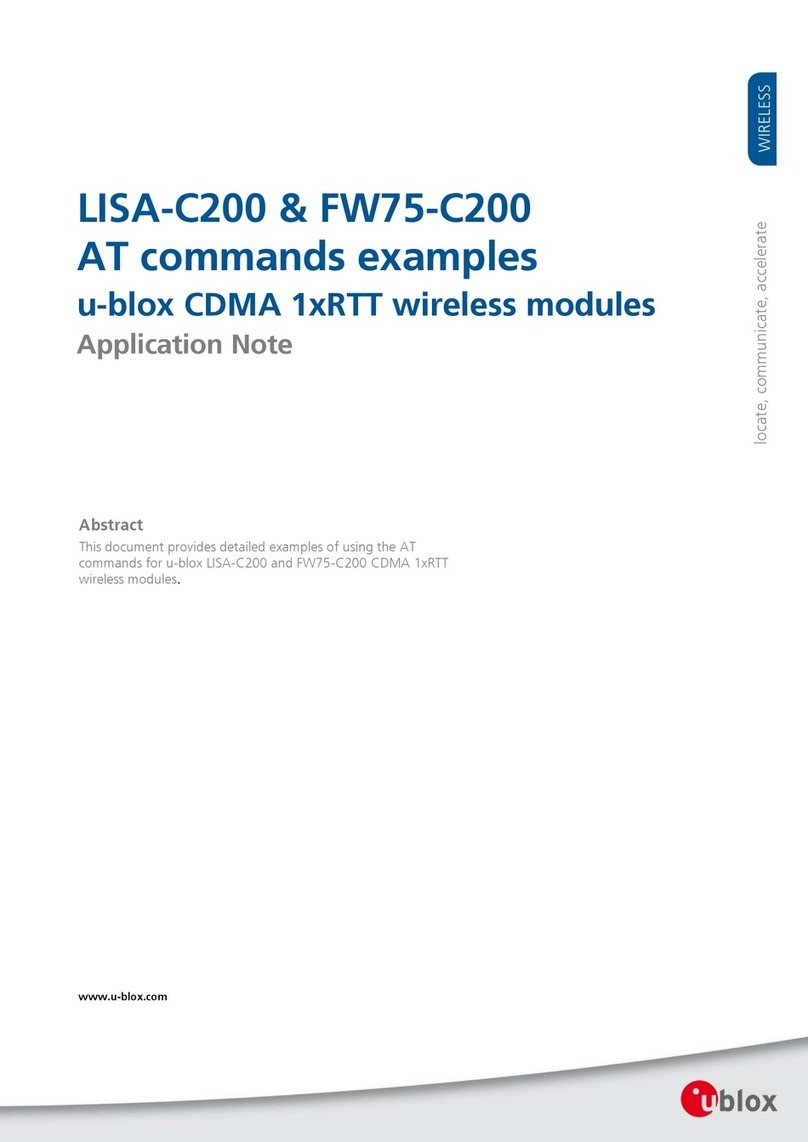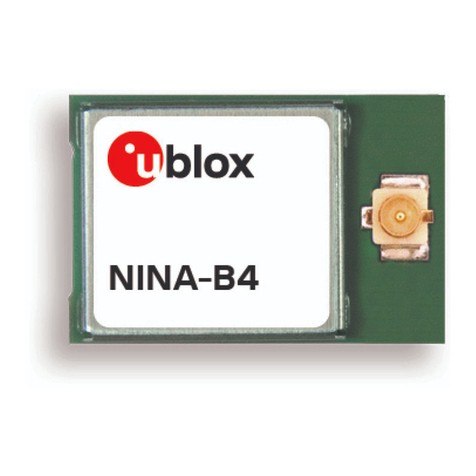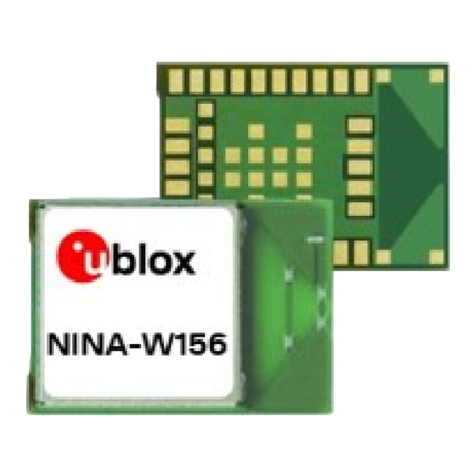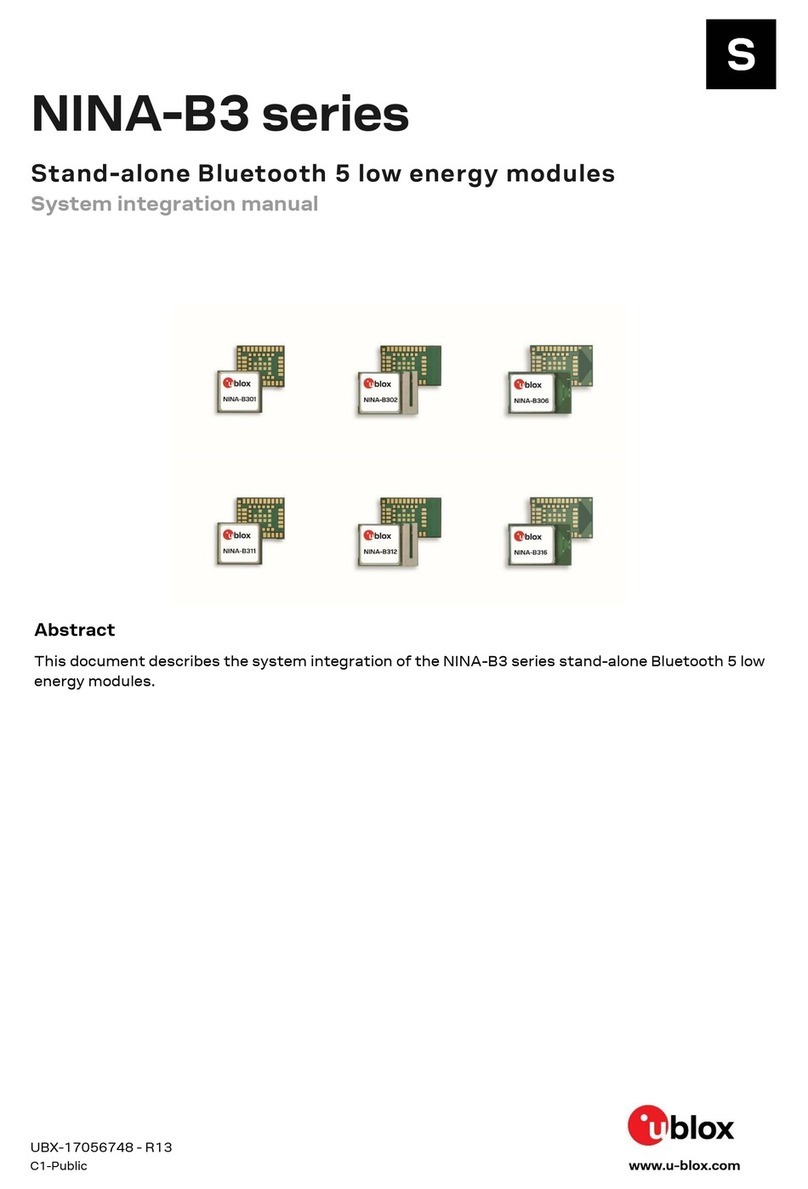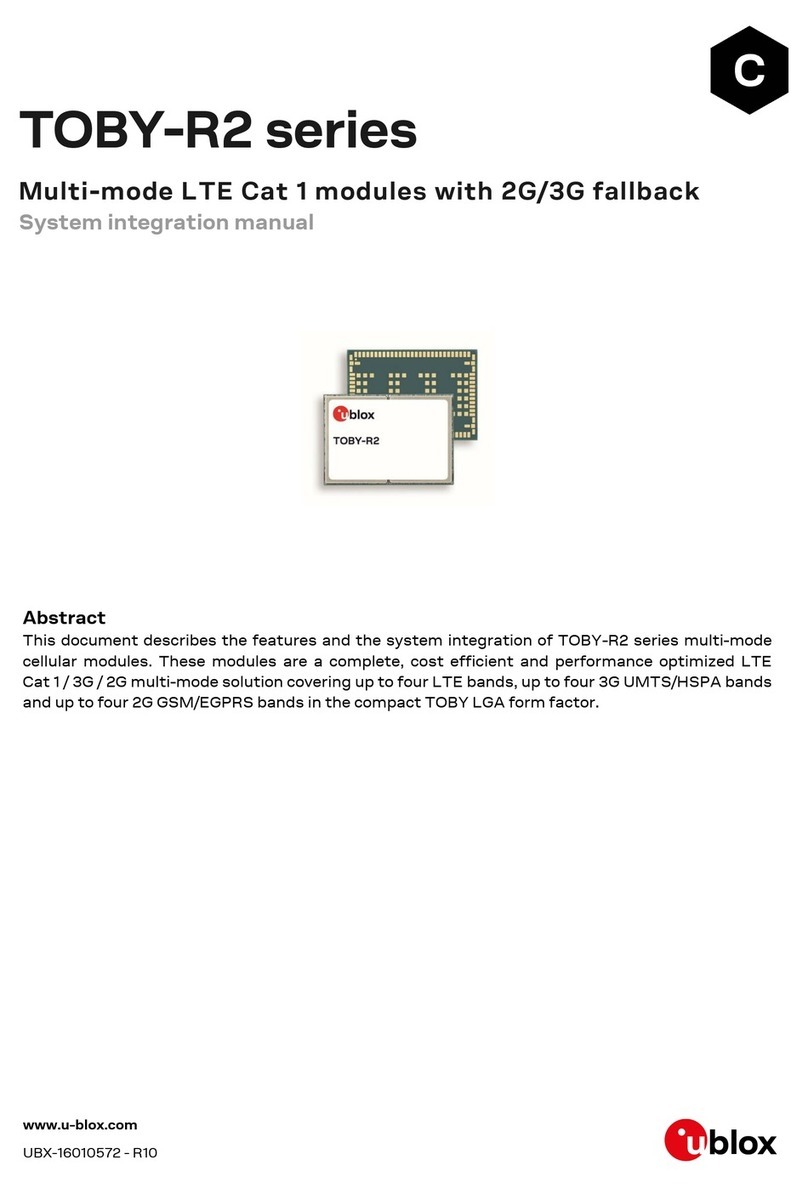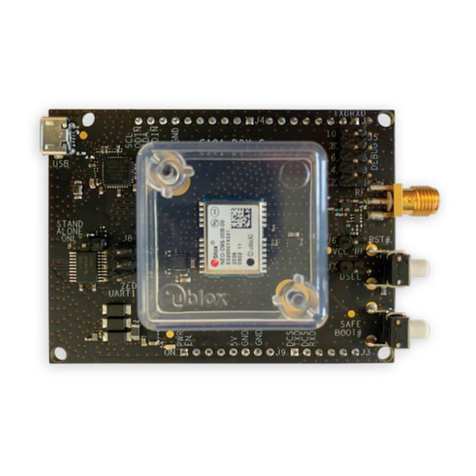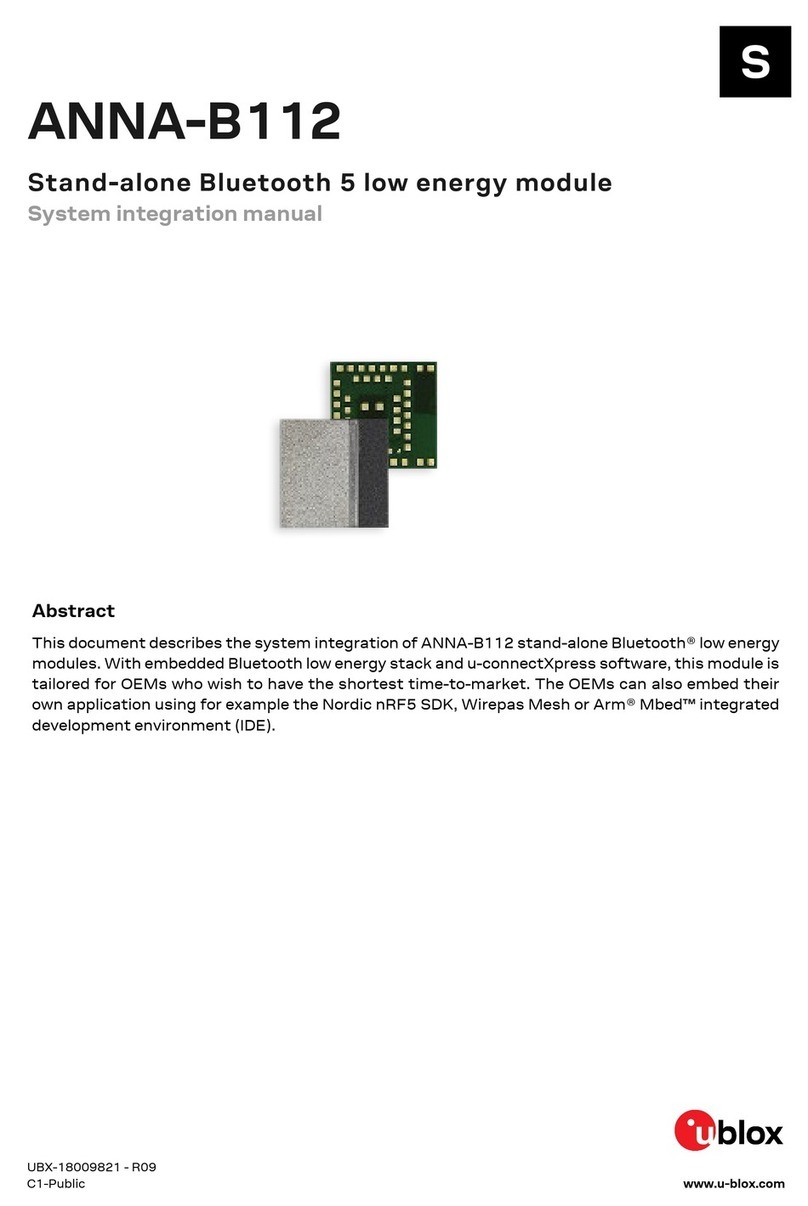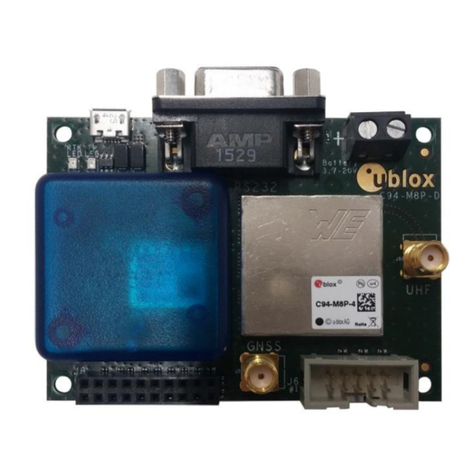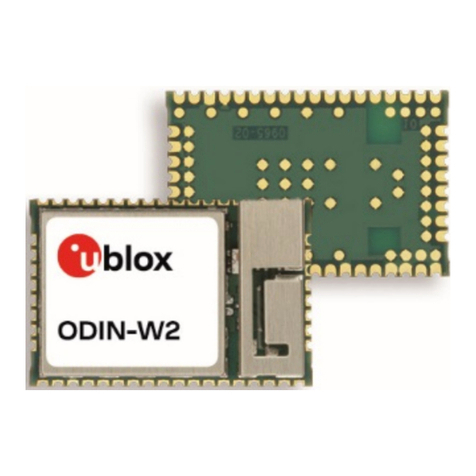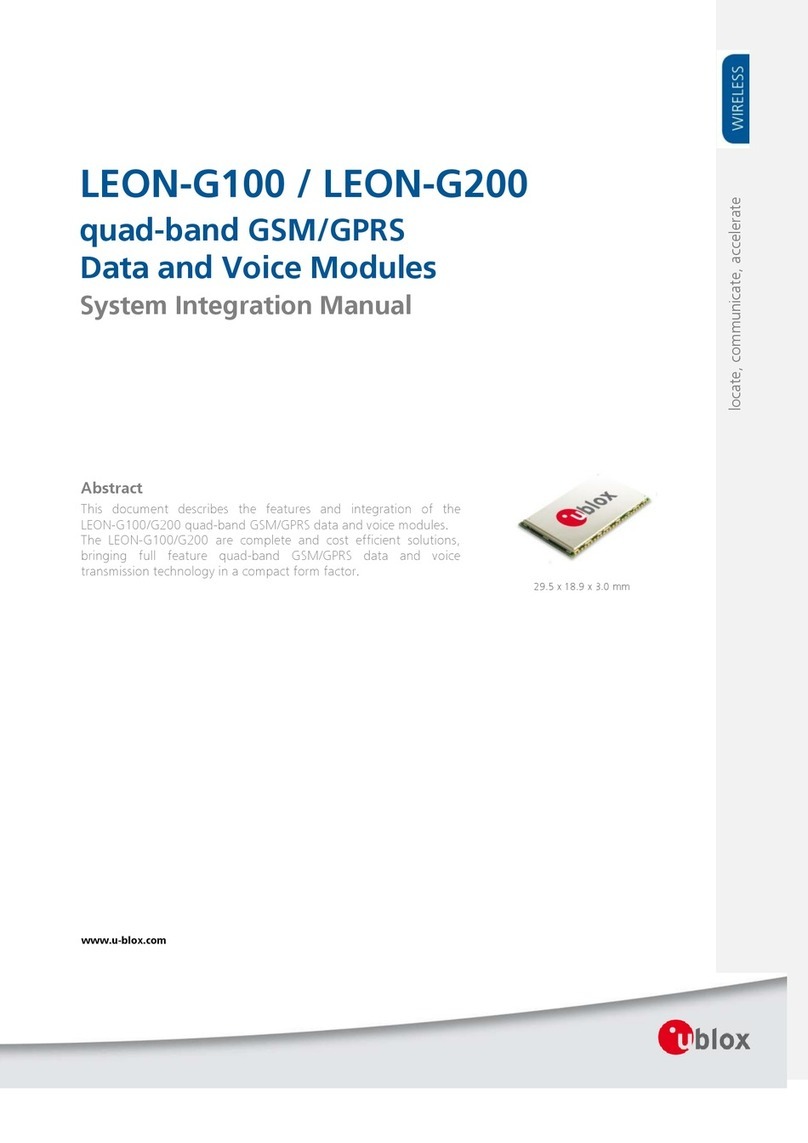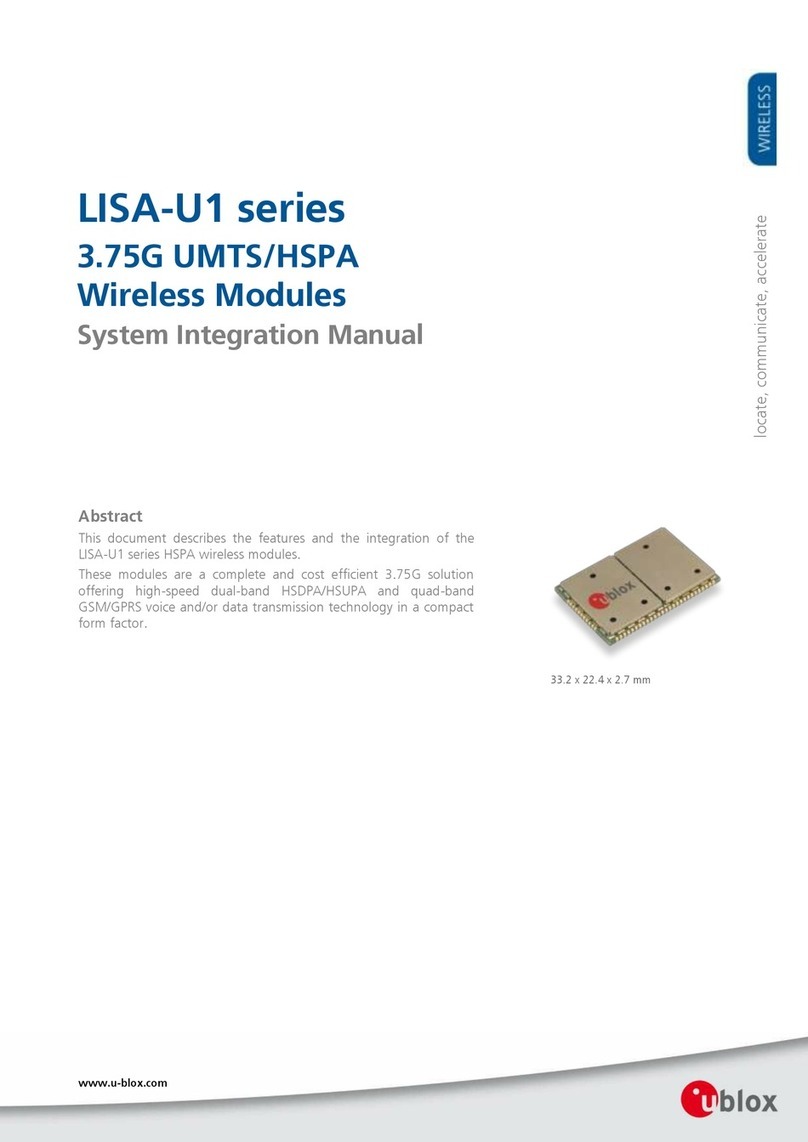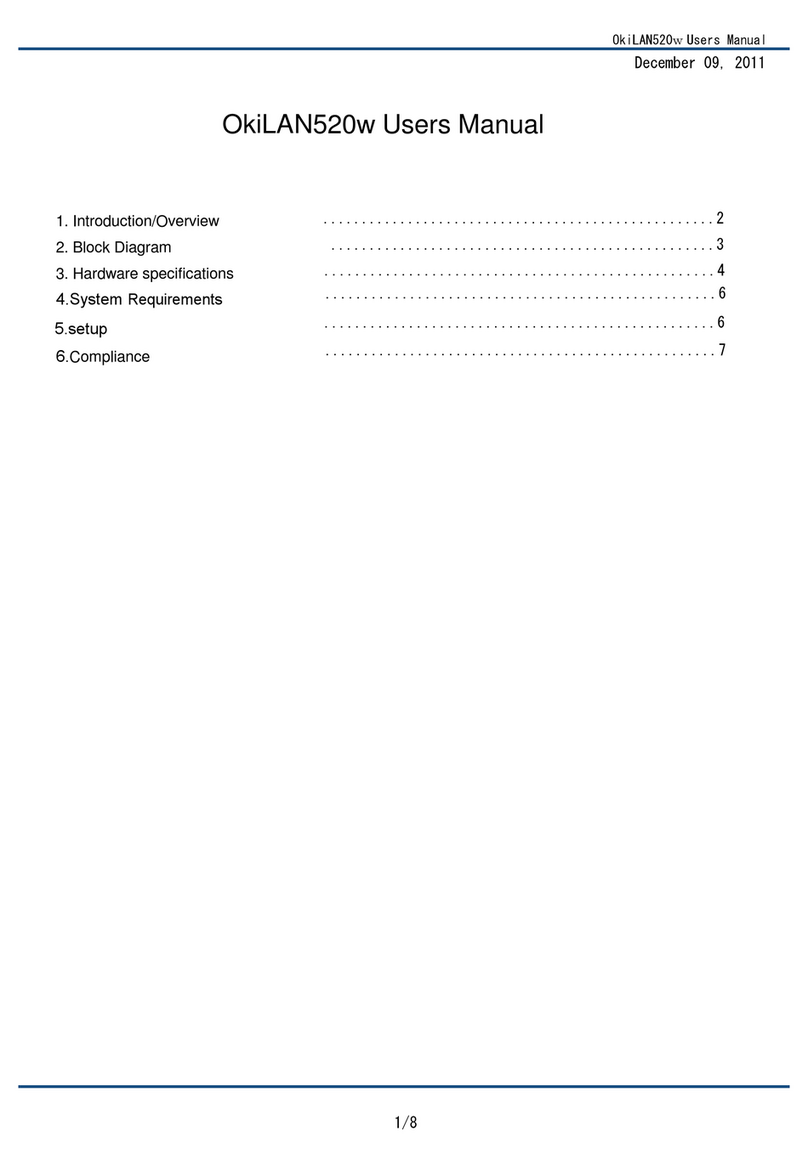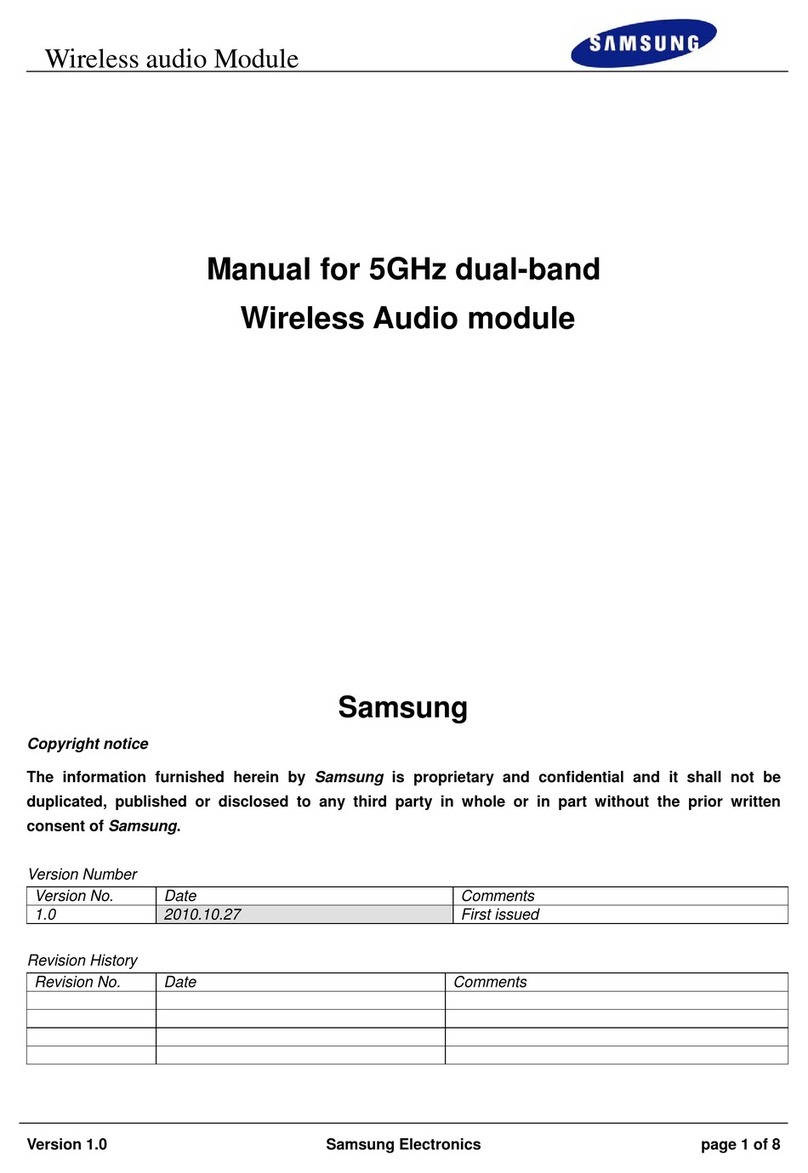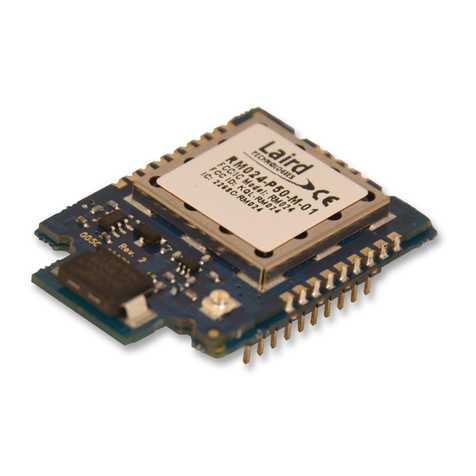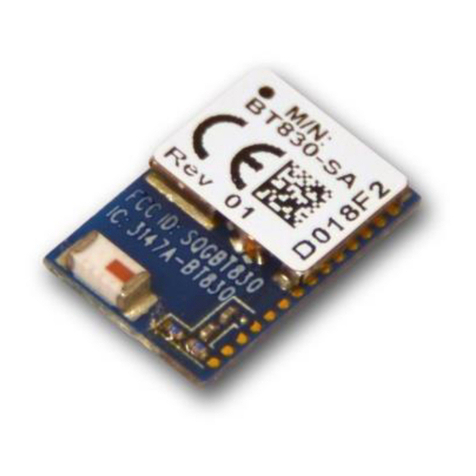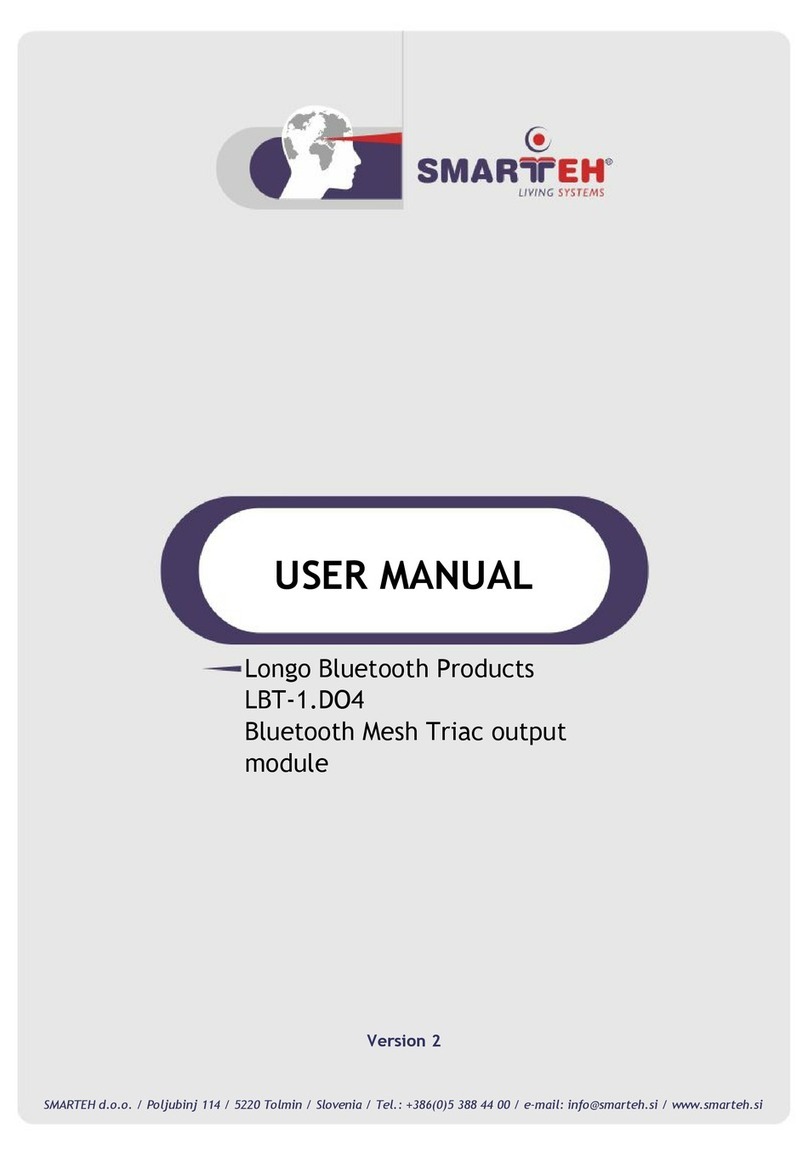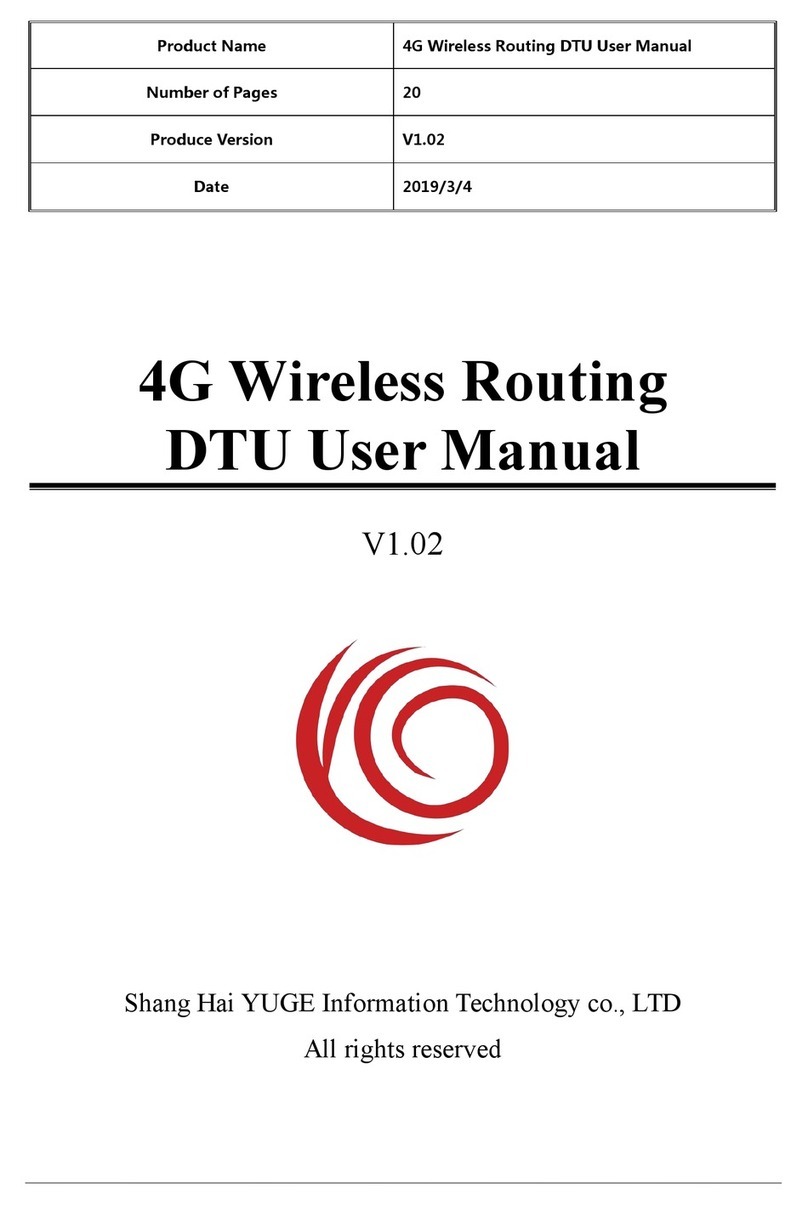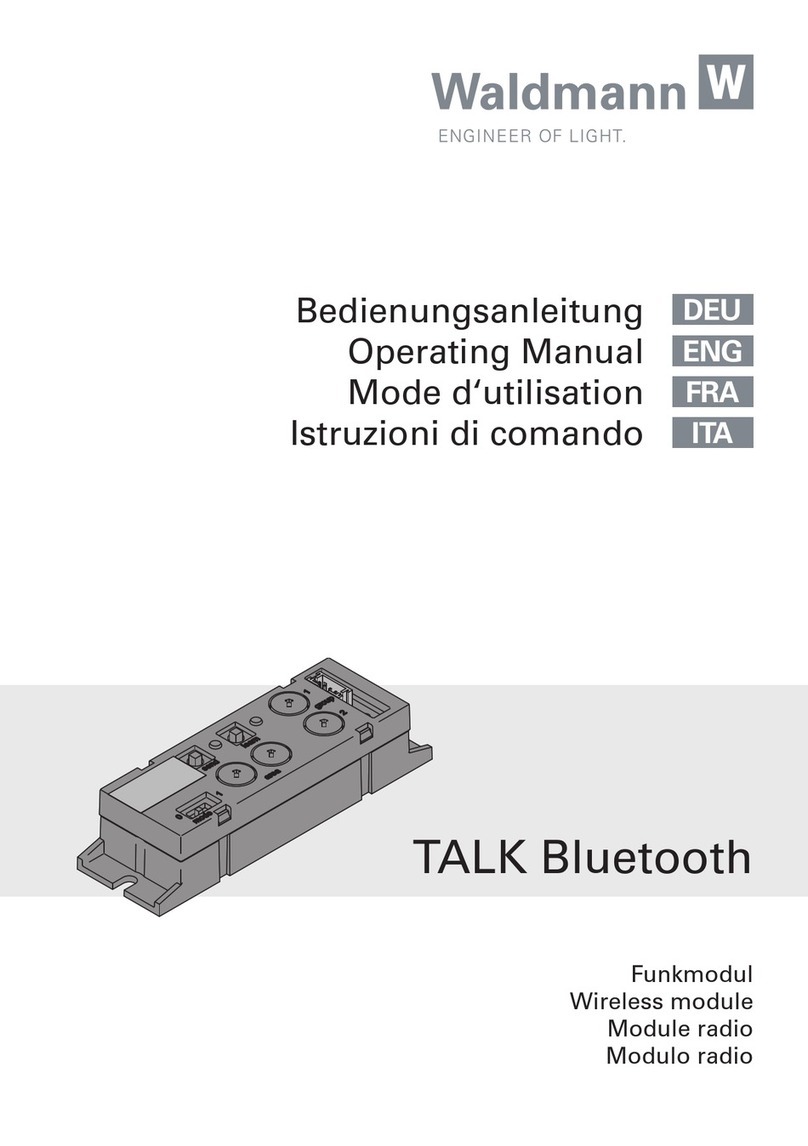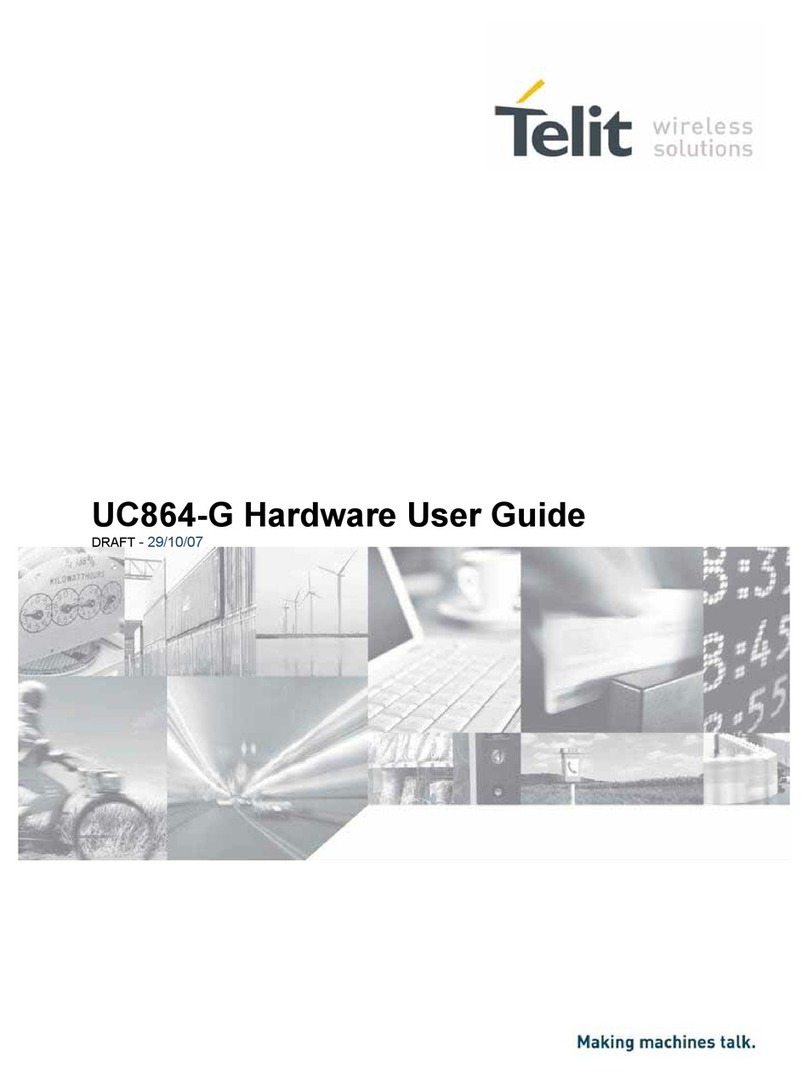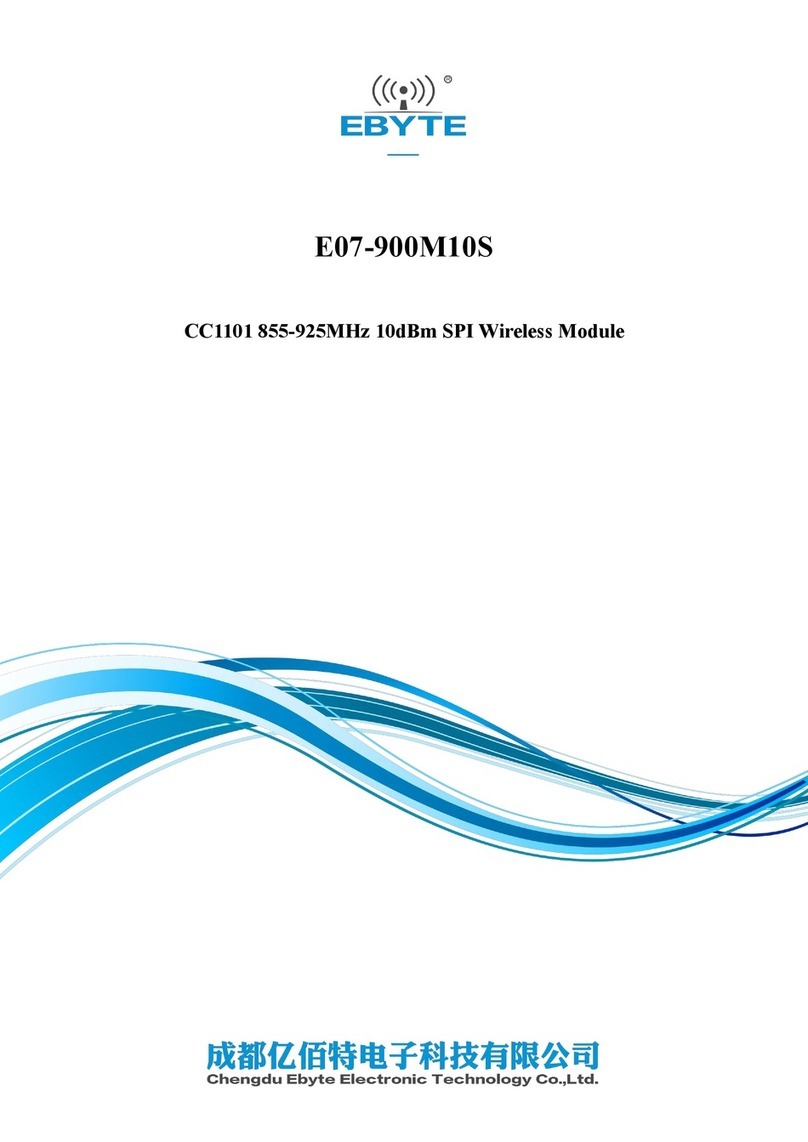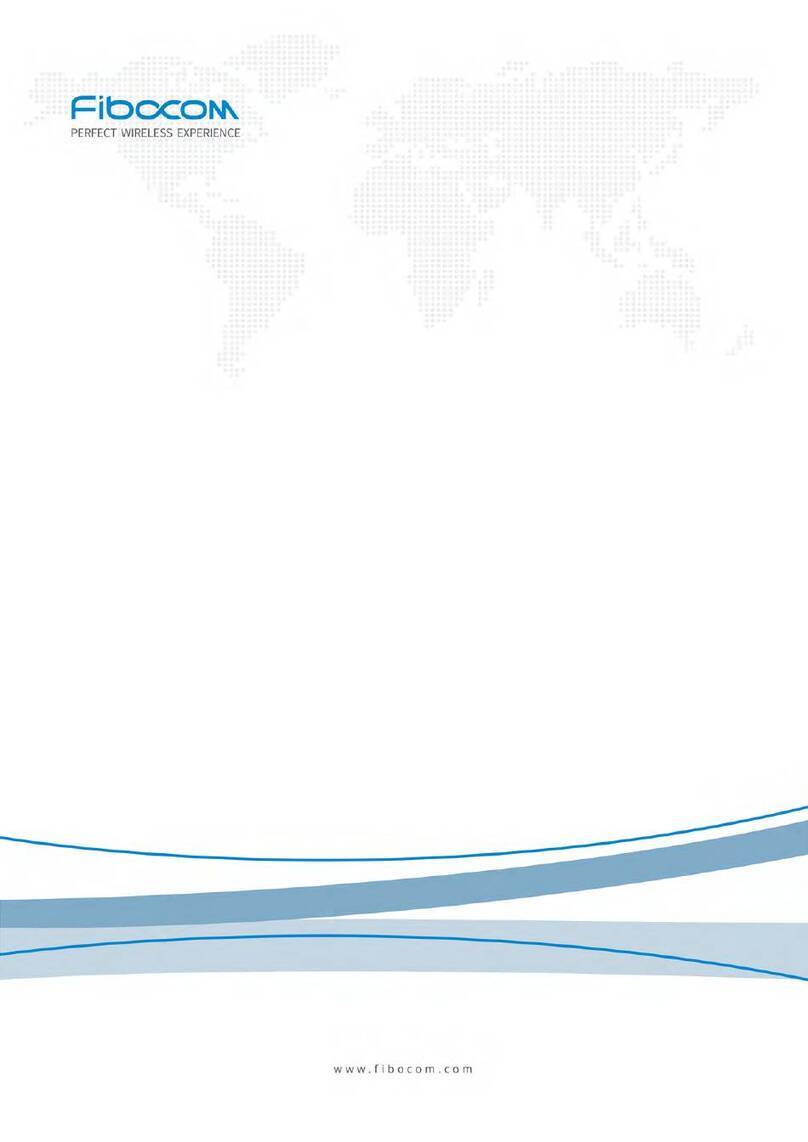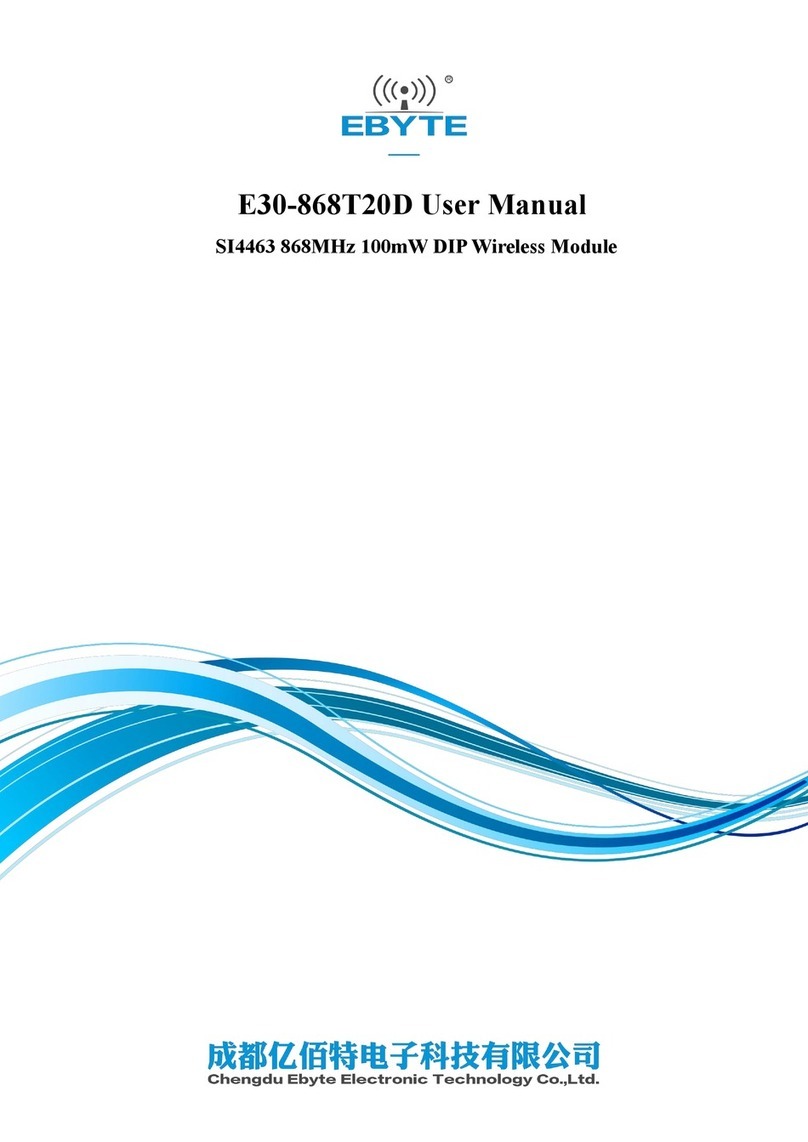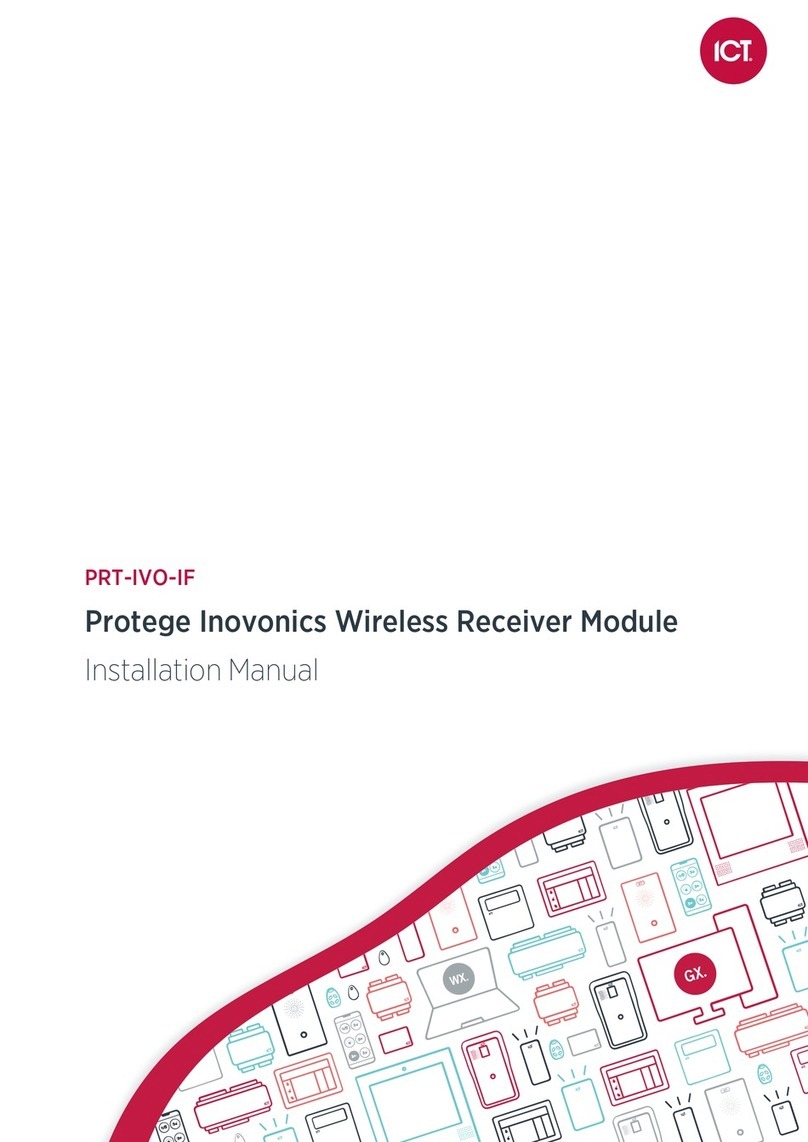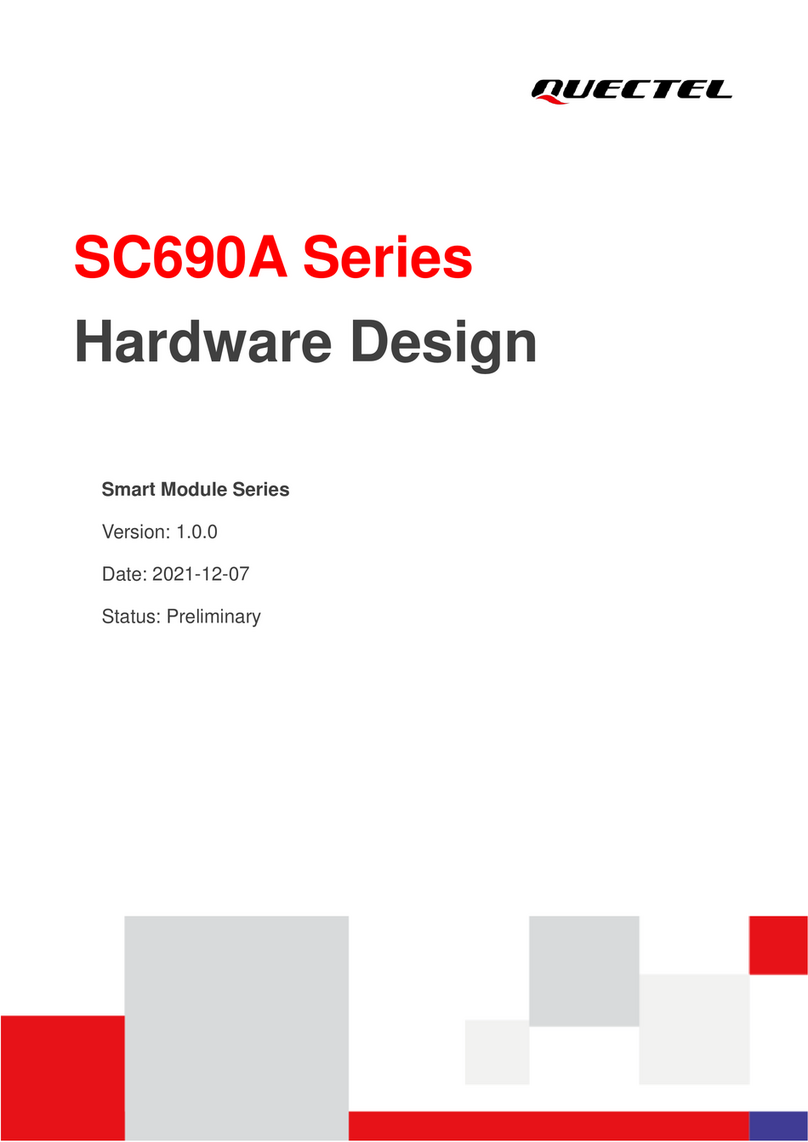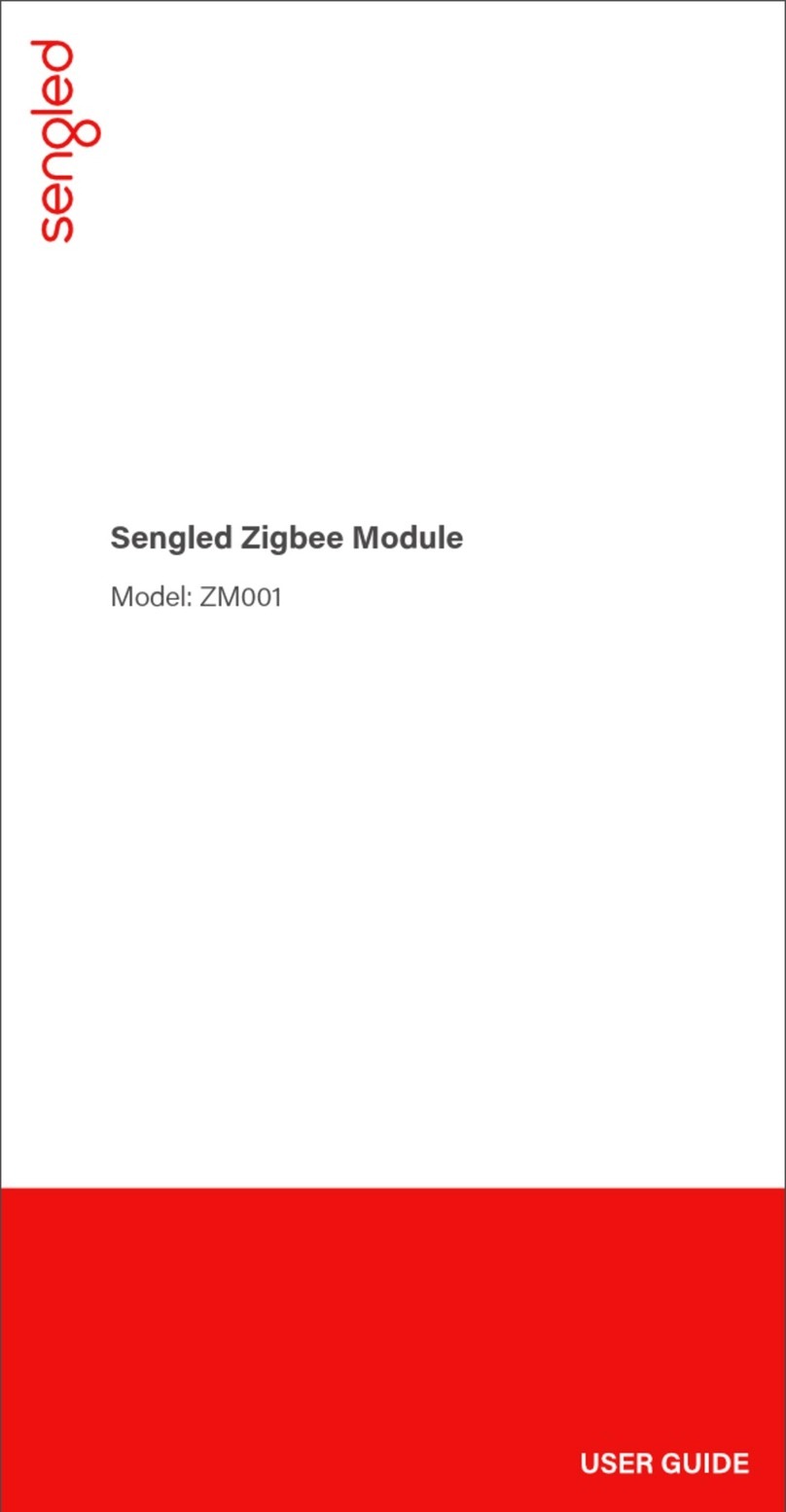
ODIN-W2 series - Data Sheet
UBX-14039949 - R05 Advance Information Contents
Page 4 of 36
5.3.2 Wi-Fi 2.4 GHz power consumption.............................................................................................. 19
5.3.3 Wi-Fi 5 GHz power consumption................................................................................................. 19
5.3.4 Classic Bluetooth power consumption......................................................................................... 20
5.3.5 Bluetooth Low Energy (BLE) power consumption......................................................................... 20
5.4 RF characteristics ................................................................................................................................ 20
5.4.1 Wi-Fi receiver characteristics 2.4 GHz .......................................................................................... 20
5.4.2 Wi-Fi receiver characteristics 5 GHz ............................................................................................. 21
5.4.3 Wi-Fi transmitter characteristics 2.4 GHz ..................................................................................... 21
5.4.4 Wi-Fi transmitter characteristics 5 GHz ........................................................................................ 21
5.4.5 Bluetooth Classic receiver characteristics ..................................................................................... 22
5.4.6 Bluetooth Low Energy receiver sensitivity..................................................................................... 22
5.4.7 Bluetooth Classic transmitter characteristics ................................................................................ 22
5.4.8 Bluetooth Low Energy transmitter characteristics......................................................................... 22
6Mechanical specifications ..........................................................................................23
6.1 Dimensions......................................................................................................................................... 23
6.2 Module weight ................................................................................................................................... 24
7Qualification and approvals ......................................................................................25
7.1 Compliance with RoHS directive ......................................................................................................... 25
7.2 Declaration of Conformity .................................................................................................................. 25
7.3 Safety Compliance.............................................................................................................................. 26
7.4 FCC and IC Compliance...................................................................................................................... 26
7.4.1 IC compliance.............................................................................................................................. 26
7.4.2 Conformité aux normes d’IC ....................................................................................................... 26
7.4.3 FCC statement ............................................................................................................................ 27
7.4.4 Labeling requirements for end product........................................................................................ 27
7.5 Japan radio equipment compliance..................................................................................................... 28
7.6 Bluetooth qualification information .................................................................................................... 29
8Product handling and soldering................................................................................30
8.1 Packaging........................................................................................................................................... 30
8.1.1 Reels ........................................................................................................................................... 30
8.1.2 Tapes .......................................................................................................................................... 30
8.2 Moisture sensitivity levels.................................................................................................................... 31
8.3 Reflow soldering................................................................................................................................. 31
8.4 ESD precautions.................................................................................................................................. 31
9Labeling and ordering information...........................................................................32
9.1 Product labeling.................................................................................................................................. 32
9.2 Explanation of codes........................................................................................................................... 33
9.3 Ordering information.......................................................................................................................... 33
Appendix ..........................................................................................................................34
